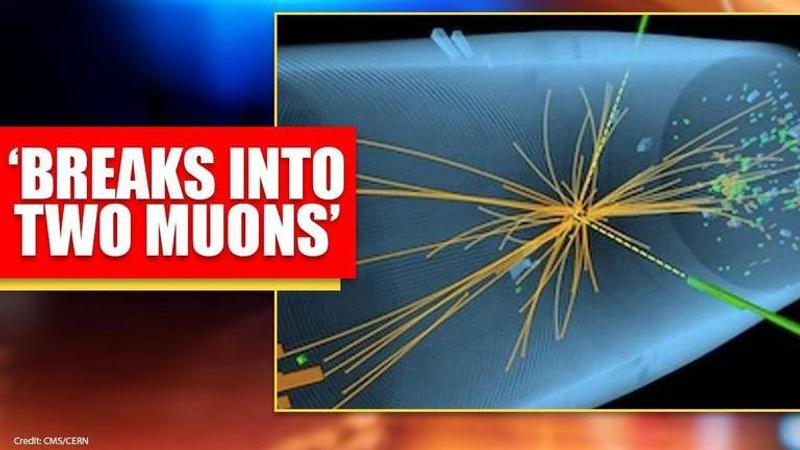Published 15:11 IST, August 7th 2020
God Particle decays into two muons, scientists one step closer to decoding 'mystery'
Scientists said that the physics process of God Particle decaying into muons is an extremely rare phenomenon as only about one Higgs boson in 5000 decays.

At the 40th ICHEP conference, Scientists at CERN announced on August 3 that they have got one step closer to decode the mystery of the ‘God Particle’ Higgs boson’s interaction with the Universe. The ATLAS and CMS experiments declared new results that show that the Higgs boson decays into two muons. In a news release, scientists said that the physics process of the Higgs boson decaying into muons is an extremely rare phenomenon as only about one Higgs boson in 5000 decays into muons. New results are pivotal as for the first time, it was observed that the ‘God particle’ interacts with second-generation elementary particles.
According to the scientists at CERN, the electrons are classified as a first-generation particle, whereas, muons belong to the second generation. Since the discovery of the Higgs boson in 2012, physicists have been attempting to decode the properties of the rare, special particle that gives mass to every particle and plays a fundamental role in the forces that provide existence to the universe. Discovered by the British physicist Peter Higgs, the particle’s energy field named 'Higgs field' was observed to impart mass on every particle that flies through it. Such observations were made possible after half-a-century of theoretical work. The God Particle answered some Standard Model of Particle Physics puzzles about how elementary particles gained mass.
[Candidate event displays of a Higgs boson decaying into two muons as recorded by CMS (left) and ATLAS (right). Image: CERN]
Produced from proton collisions at the Large Hadron Collider, the Higgs boson disintegrates – referred to as decay – almost instantaneously into other particles, according to the physicists at CERN. The primary method deployed to study the Higgs boson’s properties was to analyze how it decayed into the various fundamental particles and its rate of disintegration. CMS achieved the evidence of this decay with 3 sigmas, that recorded decaying of Higgs boson into a muon pair from statistical fluctuation is less than one in 700. Scientists explained that ATLAS’s two-sigma result would mean one in 40 chance, the combination of which resulted above 3 sigmas. Therefore, Higgs boson was decaying to two muons.
CMS is proud to have achieved this sensitivity to the decay of Higgs bosons to muons and to show the first experimental evidence for this process. The Higgs boson seems to interact also with second-generation particles in agreement with the prediction of the Standard Model, a result that will be further refined with the data we expect to collect in the next run, said Roberto Carlin, spokesperson for the CMS experiment.
[A candidate Higgs to ZZ to four-lepton event as seen in the ATLAS detector. The four reconstructed muons are visualized as red lines. The green and blue boxes show where the muons passed through the muon detectors. Image: ATLAS Collaboration/CERN]
“This evidence of Higgs boson decays to second-generation matter particles complements a highly successful Run 2 Higgs physics programme. The measurements of the Higgs boson’s properties have reached a new stage in precision and rare decay modes can be addressed. These achievements rely on the large LHC dataset, the outstanding efficiency and performance of the ATLAS detector, and the use of novel analysis techniques,” said Karl Jakobs, ATLAS Spokesperson.
Muon-pair interactions "not an easy feat"
However, one of the most challenging parts about the study was that at the LHC, for every predicted Higgs boson decaying to two muons, scientists saw thousands of muon pairs produced through other processes. But scientists found a characteristic signature of the Higgs boson’s decay which is a small excess of events that cluster near a muon-pair mass of 125 GeV and were able to measure energy, momentum, and angles of muon candidates. In addition, the sensitivity of the analyses was improved through methods such as sophisticated background modelling strategies and other advanced techniques such as machine-learning algorithms. CMS combined four separate analyses for the observation.
Updated 15:10 IST, August 7th 2020





